

Values below the scale are luminance / 1 cd.m-2. (A default scale of raw2lum would have ten times lower values.)
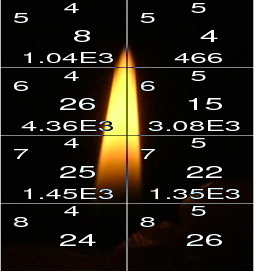 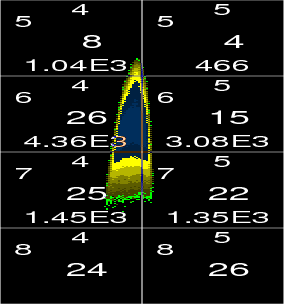 Blue > 250; 0.5 lx |
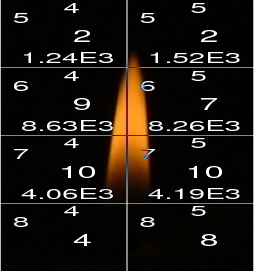 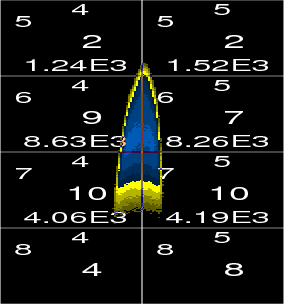 Green > 500; 1.2 lx |
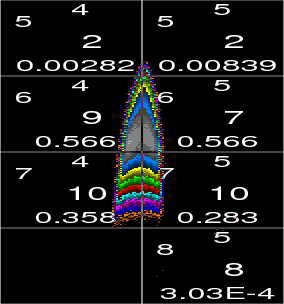  Photopic > 700; 1.8 lx |
 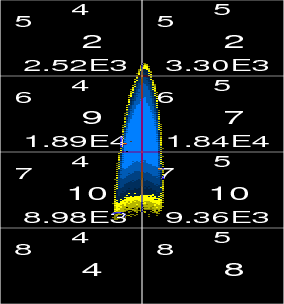 Red > 1000; 2.8 lx |
The above four pair of images have their bottom luminance limit set in such a way, that approximately the same part of the flame is included. So the (colour) illuminances produced by it can be compared. Exposure settings were (with exception of blue colour Exposure time: 1/1000 (1/250 for the blue colour); Aperture : f/9.0; ISO equiv. : 200. At the bottom of the text boxes within the images, average luminances of those areas are given, whose pixels have (colour) luminance within the given limits.
Top images in the photopic and red columns have another meaning and scale. That in the photopic column has a 5 times more detailed scale (see below), and luminous flux densities given in the boxes. Photopic luminaces are approximated by 0.65 G + 0.35 R. The top image in the column for red colour codes no luminance at all, but the ratio of R and B luminances (for its scale see the bottom of the page).
 (5× finer)
(5× finer)
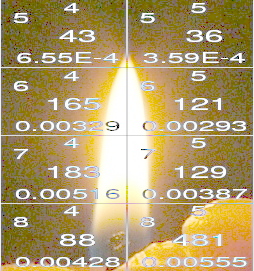 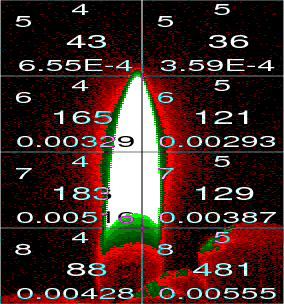 4 < Blue < 250; 0.04 lx |
 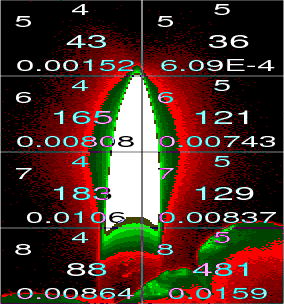 4 < Green < 500; 0.08 lx |
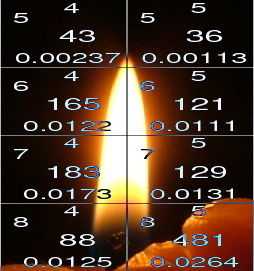  4 < Photopic < 700; 0.13 lx |
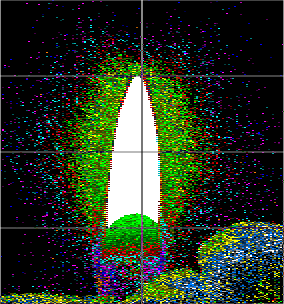 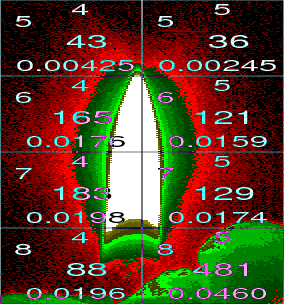 4 < Red < 1000; 0.26 lx |
In the above set, all exposure times were 1/15 s. Areas shown as white mean that the luminance is over the given limit. In the plain views within the first two columns, B and G, the faint parts of the image are enhanced (converted with gamma 5 and 4), but it's always the same image. Coloured parts below the main flame can be noticed in the luminance-coded images: blue on both flame margins on the sides of the candlewick (similar blue as known from gas flames), and the red glowing end of the wick. Also, the very bee wax of the candle is coloured red (so that part is thrice more luminous in R than in G, otherwise the ratio is about 2 only). R/B values are colour-coded at top image of the R column (see its at the bottom of the page).
At the bottom of the text boxes within the images, illuminances produced by these boxes ( / 1 lx) are given, including just those pixels which have (colour) luminance within the given limits. Total illuminances given below the images concern the whole scene including the whole candle, not just the central part with the flame as shown in the cropped part (so the sum of the numbers given in the boxes is lower than the sum below the images).
 (R/B ratio scale)
(R/B ratio scale)
Jenik Hollan, December 2006 (see more info in the parent directory)